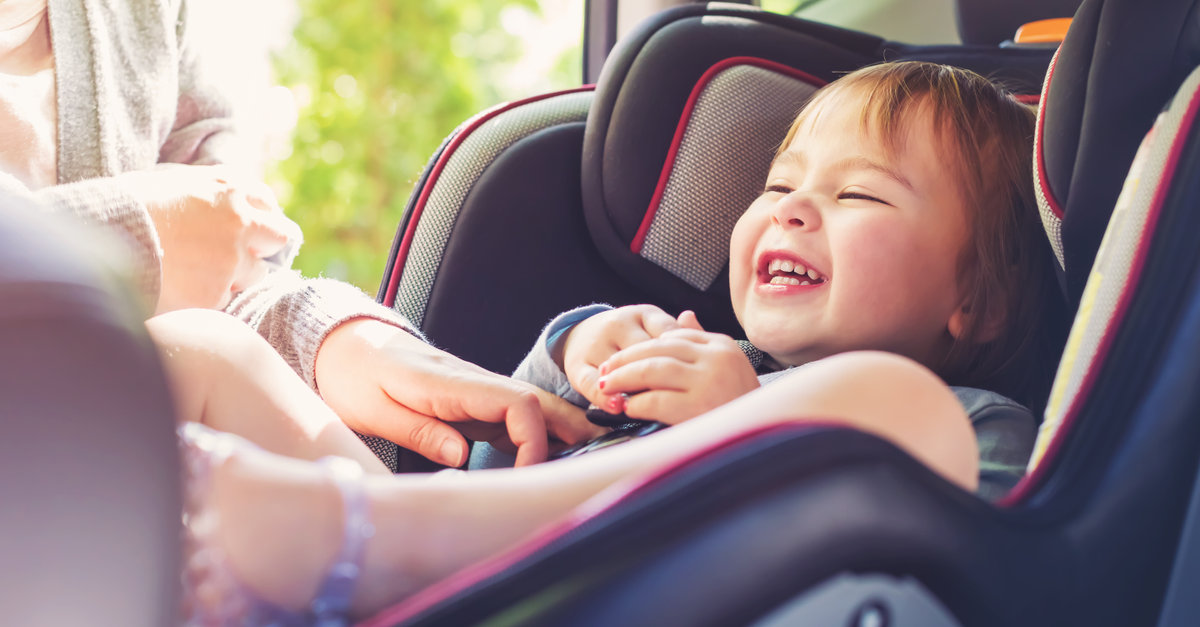Driving a new car off of a lot can be an exciting experience. It creates an air of confidence and gives you something to be proud of.
However, no driver should overlook safety features for style and luxury. Therefore, you should consider a car with plenty of safety features, including anti-lock brakes, airbags, and safety belt features.
Most importantly, at Sierra Blanca Motors in Ruidoso, NM, we believe knowing the right car seat for your child is something every car owner should know. Below, we’ll discuss the answer to the popular question, “Which car seat should my child be using?”
You should also visit the United States Department of Transportation for their up-to-date resources on car seats and booster seats after reading this article.
Rear-Facing Car Seat
You should place babies from birth up to four years of age in a rear-facing car seat. Upon installing the car seat, lock the base into the back seat using the car buckles. Next, snap the car seat into the base so it’s facing the rear windshield.
Facing the infant backward prevents the baby’s neck from snapping forward in a collision. Placing a young child in the back seat rather than the passenger’s seat also protects them from highly pressurized airbags during an accident.
The three main types of rear-facing car seats include:
- Infant Car Seat: A smaller car seat that solely faces backward. Primarily used with newborns who typically outgrow the seat within a year.
- Convertible Seat: Not only does it extend your child’s time riding in a rear-facing position, but you can flip it into a front-facing position once your child has reached the maximum weight and height requirements.
- All-In-One Seat: Like convertible seats, combination seats allow both rear-facing and front-facing options. However, it also works as a booster seat once your child outgrows the car seat.
Forward-Facing Car Seat
Once your child reaches at least 40 pounds, you can switch them into a front-facing position. A forward-facing car seat tethers to the back seat of your vehicle, preventing the car seat from tipping over during sudden stops or accidents. It also uses a harness to keep the child secure while driving.
Many forward-facing car seats begin as rear-facing car seats, including:
- Convertible Seats
- All-In-One Seats
The main difference between the two is the all-in-one seats adhere to a larger age range since they also transform into booster seats. Combination seats, although they don’t start as rear-facing seats, also convert into booster seats as your child outgrows the conventional seats.
Your child has outgrown their forward-facing car seat if their:
- Ears sit over the car seat
- Shoulders hover over the top slot
- Weight is between 60 to 100 pounds
Booster Seat
Booster seats transition young children from five-point harnesses to the car’s built-in seat belts by simply providing proper elevation in the back seat. Booster seats allow children to sit upright with the seat belts flat across their chests. Otherwise, children under 4 feet 9 inches will not fit into adult seat belts, which can result in severe injuries during accidents.
Beginning when the child meets the requirements, many children tend to switch to one of the following primary booster seat options:
- High-Back Booster Seats: Many vehicles lack the back support necessary for a booster seat. Whether there’s an absent headrest or a short seat back, high-back booster seats make up for it with the comfort and security your child needs during their ride.
- Backless Booster Seats: On the other hand, if your vehicle contains a proper headrest and back and neck support, a backless booster seat will solely provide basic elevation.
If you already have an all-in-one or combination seat available, you can modify your rear-facing or front-facing seats into adjustable booster seats.
Sierra Blanca Motors | Your Local New Mexico Dealership
At Sierra Blanca Motors, your trusted car dealership in Ruidoso, NM, we understand the importance of these safety features. Keeping your child safe in the backseat is imperative, whether it’s for a quick trip to their grandmother’s house or a longer trip for your baby’s first vacation spot. That’s why we want you fully informed before making a car seat purchase for your loved one.
Now that you have a better understanding of the popular question, “Which car seat should my child be using?”, contact us at (575) 315-0145 when you're in the market for a new vehicle and we'll make sure your new vehicle and car seat match perfectly.




